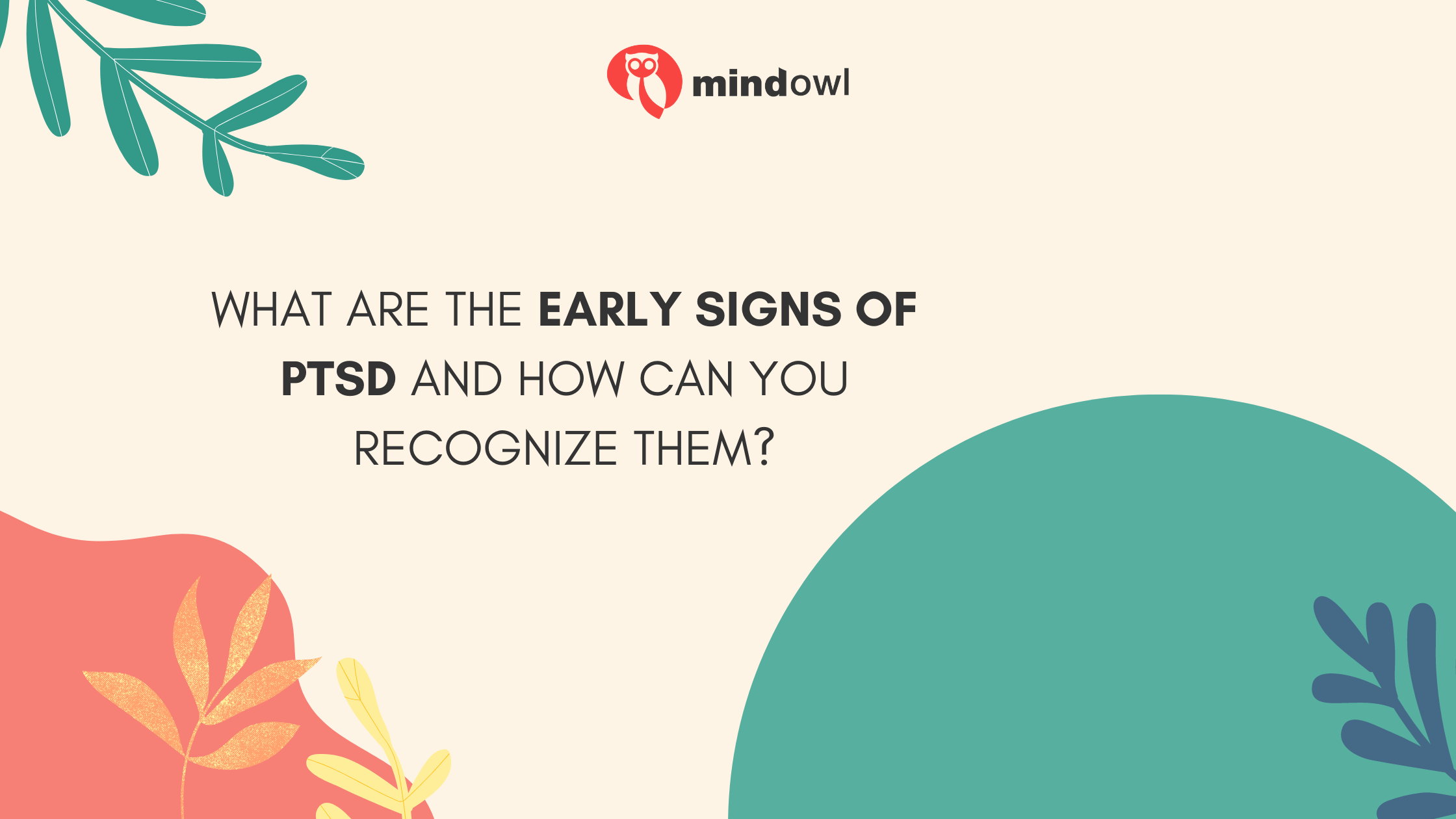Post-traumatic stress disorder (PTSD) is a mental health condition triggered by witnessing or experiencing a terrifying event. Symptoms can vary widely among individuals but typically start within one month of the traumatic event, although sometimes symptoms may not appear until years after the event. Early intervention is crucial, so recognizing the signs of PTSD is also essential.
This article explores the early signs of this condition and how they can be recognized.
Understanding PTSD
Post-traumatic stress disorder (PTSD) can develop in any individual who has experienced a traumatic event, including combat exposure, natural disasters, serious accidents, or sexual assault. This mental health condition is characterized by persistent, disturbing thoughts and emotions tied to the traumatic experience that continue well after the event has concluded. Those with PTSD may frequently relive the traumatic incident through vivid flashbacks or distressing nightmares. Common emotional responses include persistent sadness, fear, and anger.
Additionally, individuals might experience feelings of detachment or estrangement from others, making it difficult to connect socially or feel a sense of belonging. These symptoms disrupt daily functioning and can severely impact quality of life.

Recognizing the Early Signs of PTSD
The early signs of PTSD can be subtle and vary significantly from person to person. Here are some key symptoms to be aware of:
Intrusive Memories
Intrusive memories are one of the most prevalent signs of PTSD, manifesting as recurrent, involuntary, and distressing recollections of a traumatic event. You may experience these memories as vivid flashbacks that make you feel like the event is occurring again, disrupting your present reality. These episodes often trigger intense emotional and physical reactions, such as panic attacks or heart palpitations, especially when faced with reminders of the trauma. The persistent nature of these memories can significantly impair your ability to function in daily life.
Avoidance
Avoidance behaviors are a key symptom of PTSD, where you deliberately steer clear of places, activities, or people that might trigger memories of the trauma. This can include avoiding specific locations, social situations, or conversations that might bring up traumatic memories.
While such behaviors are a coping mechanism intended to reduce emotional distress, they can also lead to increased isolation and difficulties in personal relationships, reinforcing the cycle of PTSD symptoms and significantly limiting your engagement with your surroundings and loved ones.
Negative Changes in Thinking and Mood
PTSD can profoundly alter your thoughts and emotions, leading to pervasive negativity. You may also experience relentless negative thoughts about yourself or others, persistent pessimism about the future, and significant memory issues that interfere with daily functioning.
Relationships often suffer as you struggle to feel connected to others, resulting in detachment and withdrawal from social interactions. A marked loss of interest in previously enjoyable activities and an inability to feel positive emotions exacerbate the sense of isolation and sadness, further diminishing the quality of life.
Changes in Physical and Emotional Reactions
Known also as arousal symptoms, these changes in physical and emotional reactions are indicative of heightened psychological arousal in PTSD. Symptoms include being easily startled or frightened, constant vigilance for signs of danger, and engaging in risky or self-destructive behaviors.
Many individuals face difficulties with sleep and concentration, which can lead to irritability, anger outbursts, or aggressive behaviors. These symptoms are often accompanied by profound feelings of guilt or shame about the traumatic event or your reactions to it, adding to the emotional burden of the disorder.
Specific Considerations for Women
Women are twice as likely to develop PTSD as men, and their symptoms can sometimes differ. To learn more about the unique signs of PTSD in women, it is important to consider resources that specifically address how PTSD manifests in women.
However, below are the specific considerations you should watch out for in women:
Emotional Responses
Women with PTSD might display more pronounced emotional responses. They may exhibit higher levels of anxiety and distress and may be more likely to feel depressed or anxious.
Physical Symptoms
In women, PTSD might also manifest through physical symptoms such as nausea, headaches, and palpitations. These symptoms should not be overlooked as they contribute significantly to the distress experienced by women with PTSD.
Early Intervention and Recognition
Early recognition and intervention are crucial in managing post-traumatic stress disorder (PTSD), as they significantly enhance recovery prospects. Identifying Fsymptoms at an initial stage allows for timely therapeutic intervention, which can prevent the condition from worsening and mitigate long-term psychological effects.
If you or someone you know exhibits signs of PTSD, it is vital to consult with a healthcare professional. These specialists can provide a thorough assessment and confirm a diagnosis. Treatment options typically include therapy, such as cognitive-behavioral therapy or EMDR (Eye Movement Desensitization and Reprocessing), and may also involve medications to alleviate symptoms.
Often, a combination of both therapeutic and pharmacological approaches is employed to address the complex nature of PTSD effectively. Engaging with these resources early can lead to better outcomes and a faster path to recovery.
Conclusion
Recognizing the early signs of PTSD is crucial for timely and effective intervention. By understanding and identifying these symptoms, you can take essential steps towards managing this challenging condition. Awareness and education are vital in reducing the impact of PTSD and helping you lead a healthier, more productive life.
MindOwl Founder – My own struggles in life have led me to this path of understanding the human condition. I graduated with a bachelor’s degree in philosophy before completing a master’s degree in psychology at Regent’s University London. I then completed a postgraduate diploma in philosophical counselling before being trained in ACT (Acceptance and commitment therapy).
I’ve spent the last eight years studying the encounter of meditative practices with modern psychology.

